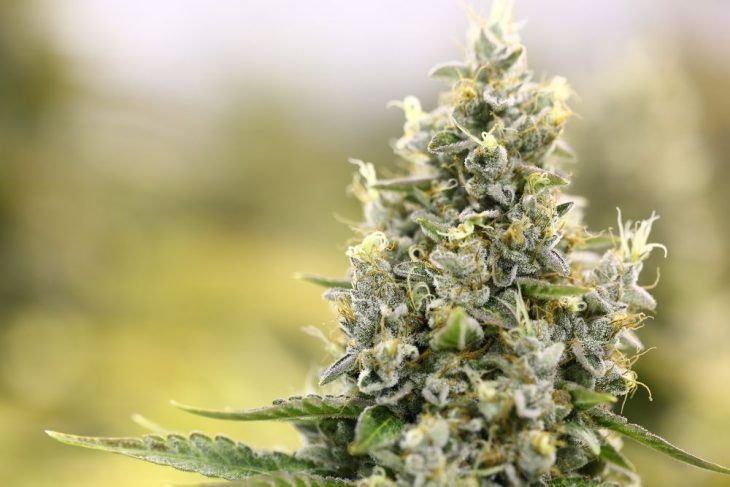You are here
Home 🌿 Recreational Marijuana News 🌿 First Nations urging Ottawa to include cannabis in drugs covered by non-insured drug benefit plan 🌿First Nations urging Ottawa to include cannabis in drugs covered by non-insured drug benefit plan

A medical marijuana company led by Phil Fontaine, a former national chief of the Assembly of First Nations, has hired a well-connected lobby firm to convince the federal government that cannabis should be included in the Non-Insured Health Benefits (NIHB) program run by the Indigenous Services department.
The decision by Indigenous Roots to enlist the services of the Bluesky Strategy Group comes after many First Nations have jumped into the medical marijuana industry and as others contemplate the move.
“The general premise is Veterans Affairs has covered medical marijuana for veterans suffering from PTSD and it’s been argued that [for] residential school survivors and their families there’s a significant amount of PTSD going on there. So why should there not be similar treatment or recognition of that?” said Susan Smith, one of Bluesky’s owners.
“It makes sense, too, especially in light of the opioid crisis and the self-medication that people are doing,” Ms. Smith said. “And it lines up, obviously, in many communities with their Indigenous beliefs. It’s a natural product.”
Chiefs attending a meeting of the Assembly of First Nations (AFN) last year endorsed a motion by the Sipekne’katik (Shubenacadie) First Nation in Nova Scotia directing the AFN to negotiate with the government to ensure that First Nations people have “reasonable access” to medical cannabis though the federal drug benefits plan.
The motion warned that failure to include marijuana under the benefits program could result in First Nations patients “being unfairly deprived of effective cannabis therapies due to the inability to bear financial costs of such therapy.”
Medical marijuana costs about $7 a gram and the amount required each week depends on the patient and the nature of their illness.
The Indigenous Services department said in an e-mail on Friday that, in order for a product to be listed on the NIHB Program Drug Benefit List, it must be approved by Health Canada under the Food and Drug Regulation, have a notice of compliance and a drug identification number, and be prescribed by a licensed practitioner and dispensed by a pharmacist.
“There are no forms of medical cannabis that currently meet these conditions,” the department said.
But neither has the door been shut on the proposal to cover the drug under the NIHB program, which covers registered First Nations people and recognized Inuit for a range of medically necessary items and services that are not paid for by other plans and programs.
Veterans Affairs has been reimbursing veterans for the cost of medical marijuana on compassionate grounds since 2008, even though cannabis does not have a drug identification number. The decision to pay for the drug on a case-by-case basis was made by senior managers in the department, rather than by the formulary review committee of Veterans Affairs which normally approves drugs for coverage and that works from Health Canada’s lists of approved pharmaceuticals.
Mr. Fontaine, who has been in the medical marijuana business since 2016, said it is important to recognize that the medicinal form of the drug is prescribed by doctors for a variety of ailments including pain management.
“So we thought the next logical step for our community, the First Nations community, would be to access medical cannabis as other people do, including our veterans,” he said.
Covering the costs of medical marijuana through the non-insured health benefits provided by Indigenous Services should be managed extremely carefully, Mr. Fontaine said.
“But clearly, when you talk about post-traumatic stress disorder, it’s been well documented that residential school survivors have suffered from this,” Mr. Fontaine said. “And the consequences are not just with the actual survivors but it’s become a generational consequence.”
The bottom line, he said, is that cannabis is a drug and there shouldn’t be any distinction made between the way veterans and First Nations people are treated when doctors have prescribed it.
420 Intel is Your Source for Marijuana News
420 Intel Canada is your leading news source for the Canadian cannabis industry. Get the latest updates on Canadian cannabis stocks and developments on how Canada continues to be a major player in the worldwide recreational and medical cannabis industry.
420 Intel Canada is the Canadian Industry news outlet that will keep you updated on how these Canadian developments in recreational and medical marijuana will impact the country and the world. Our commitment is to bring you the most important cannabis news stories from across Canada every day of the week.
Marijuana industry news is a constant endeavor with new developments each day. For marijuana news across the True North, 420 Intel Canada promises to bring you quality, Canadian, cannabis industry news.
You can get 420 Intel news delivered directly to your inbox by signing up for our daily marijuana news, ensuring you’re always kept up to date on the ever-changing cannabis industry. To stay even better informed about marijuana legalization news follow us on Twitter, Facebook and LinkedIn.




